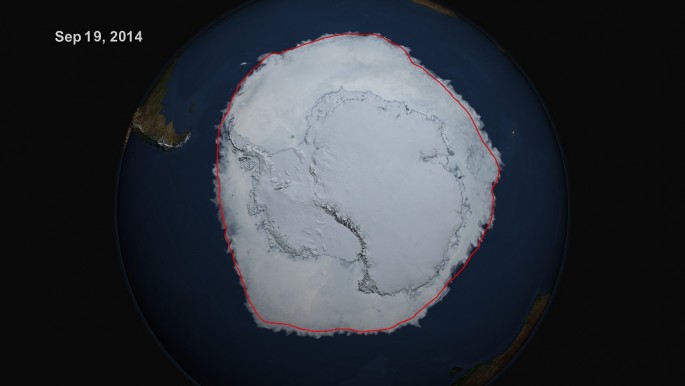Scientists reveal in a new study how sea ice around the Antarctic region are apparently increasing despite global warming and climate change that are melting ice sheets in the Arctic region. Scientists also suggest that this event is caused by a natural fluctuation of climate in the region.
This event is known as a shifting phase of the Interdecadal Pacific Oscillation which is now changing from positive to negative and reverses back again, that triggers a chain reaction in Antarctic climate, affecting sea ice formation on the frozen continent.
During 1999, this IPO shifted from its negative phase where the rate of sea ice growth in the region spiked to almost five times, between 2000 to 2014. The IPO's negative phase involves cooler than average sea surface temperatures originating from the eastern Pacific ocean, that encourages this expanding sea ice in the Antarctic region.
According to co-author of the study, Cecilia Bitz of the University of Washington, as opposed to the Arctic region, global warming apparently causes relatively weak ice loss in the Antarctic sea, which suggests how significant the IPO's effect on the region.
New findings also reveal how this above average coolness found on the sea surface from the eastern Pacific ocean can dramatically change precipitation, that can result in large scale changes that produces powerful winds that reaches all the way to Antarctica.
This can also lead to lower pressure systems becoming more deep from the coast of Amundsen Sea Low which is located along the coast of Antarctica. This system can force this incoming wind from the eastern Pacific to the direction of sea ice in the north, away from the continent, that ultimately results in expanding sea ice extent and coverage.
In this new study, scientists believe that the IPO already shifted from its negative phase to positive in 2014. This means that there will be an upcoming warmer period in the eastern Pacific ocean's surface temperatures. Based on IPO trends, when this event shifts, scientists predict that this increase of sea ice in Antarctica can already slow down or even retreat as early as the next decade.
This new study is published in the journal Nature Geosciences.



























